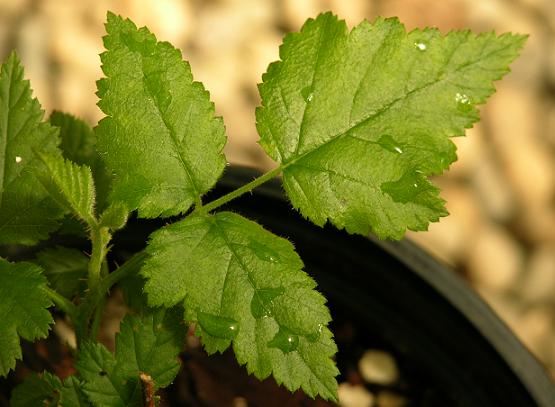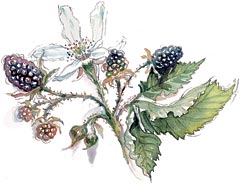|
A small bramble shrub, this is the only native
blackberry in the Pacific northwest. It occurs
from Baja, California, to BC and east to Idaho, USDA zones 5-10.
It does well with small amounts of irrigation and thrives everywhere from sun to
full shade. Many claim that its small black
berries are the tastiest blackberries - wonderful pies! |
| Rubus ursinus (California
blackberry/dewberry, Douglas berry, Pacific blackberry/dewberry).
Native to western North America. Wide, spreading shrub
with prickly branches that can tip layer to spread vegetatively. White
flowers may be distinguished from those of other blackberries by their
narrow petals. Sweet, very aromatic, edible fruits are dark purple to
black and up to 2 centimeters in length. |
 |
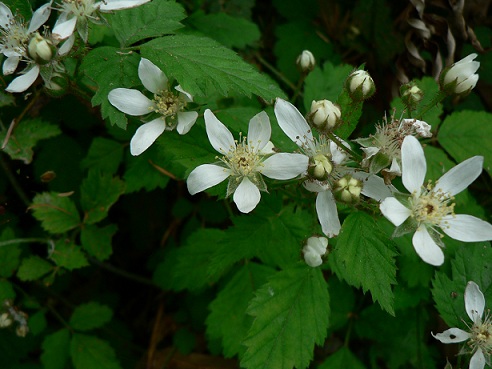 |
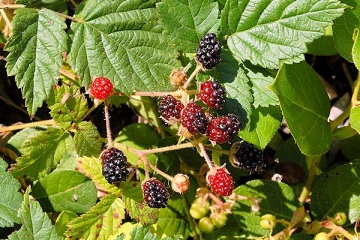 |
|
Rubus laciniatus, Cutleaf Evergreen Blackberry or Evergreen Blackberry.
Native to Europe, now invasive species in the
United States. Deciduous, bramble-forming
shrub with prickly shoots. Leaves are palmately compound, five leaflets
divided into deeply toothed subleaflets, jagged, thorny tips. Flowers
have pink or white petals. Fruits are similar to the common blackberry,
with a unique, fruitier flavour. |
 |
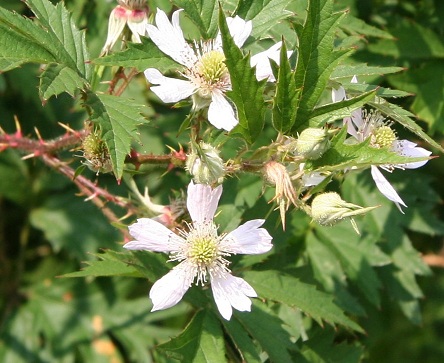 |
 |
|
Rubus armeniacus (syn. Rubus discolor) Himalayan Blackberry.
Introduced to America in 1800s as a cultivated crop.
Birds/other animals eat berries, spread the seeds.
Perennial with biennial stems. First year leaves are 7–20
cm long, palmately compound with five leaflets. Second year, stem does
not grow longer, but produces side shoots, with smaller leaves,
oval-acute, dark green above and pale to whitish below,toothed margin
three leaflets and thorns along the midrib on the underside. Flowers on
second-year side shoots, five white or pale pink petals..Fruit 1.2–2 cm
diameter, ripening black or dark purple. |
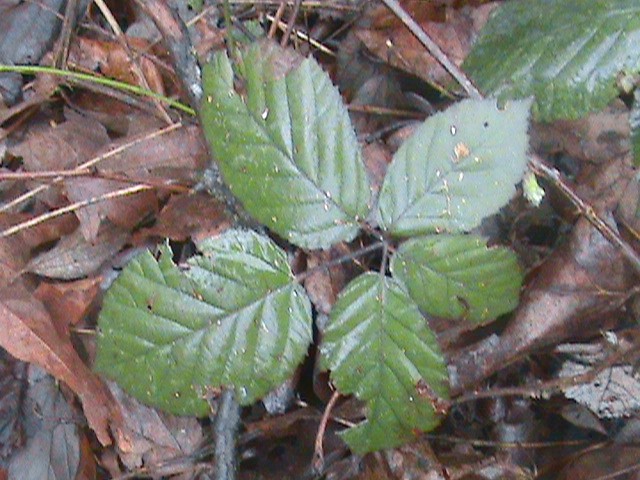 |
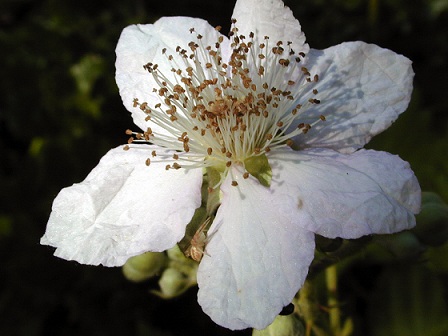 |
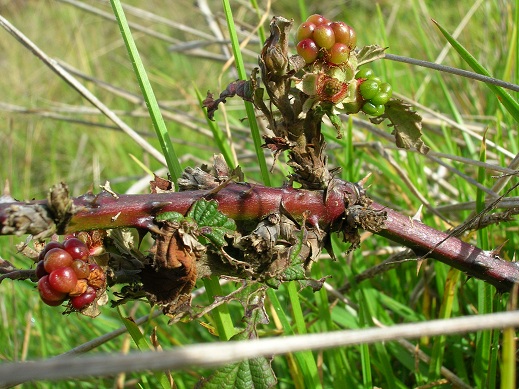 |
|


